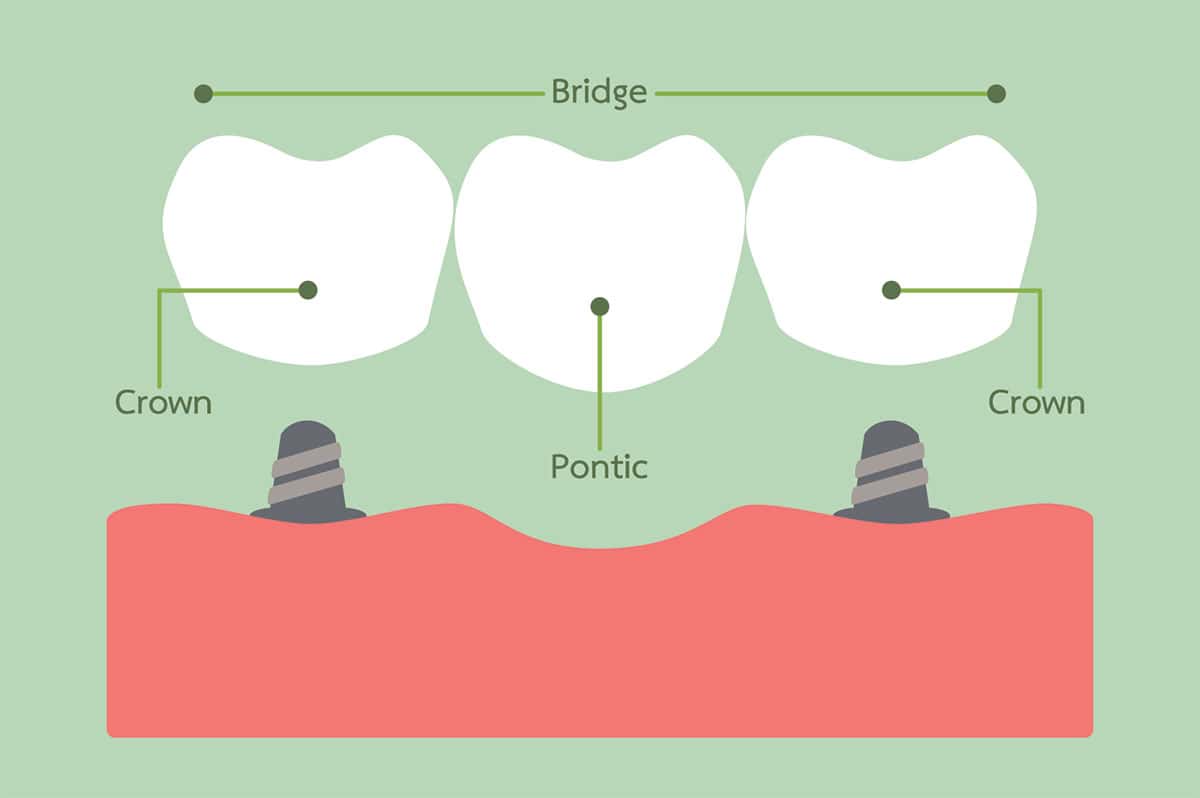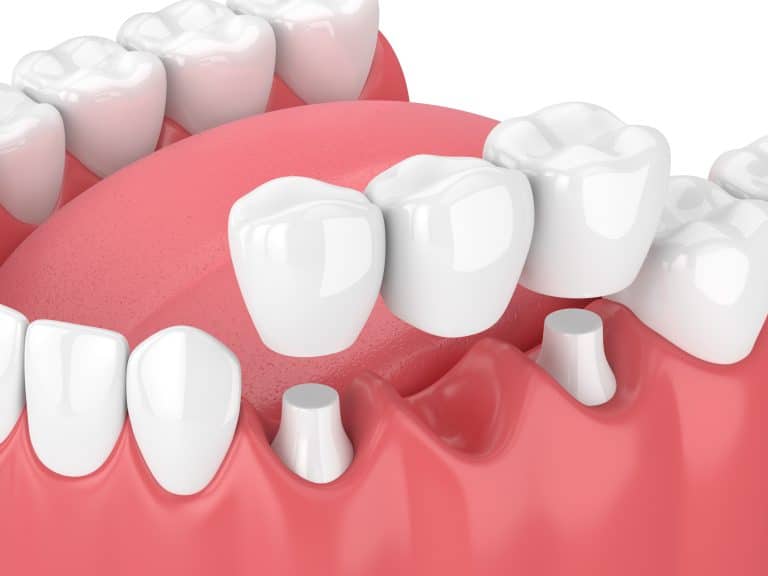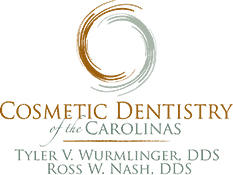Restore Your Smile With Dental Bridges
 Are you missing one or more teeth and seeking an effective solution to enhance both your appearance and functionality? At Cosmetic Dentistry of the Carolinas, experienced dentists Dr. Ross Nash and Dr. Tyler Wurmlinger understand the impact of tooth loss on confidence and overall oral health. They blend a compassionate approach with state-of-the-art dental care to provide solutions customized for every patient. Dental bridges are a leading tooth restoration option because they can fill the gap left by a missing tooth in only a couple of visits.
Are you missing one or more teeth and seeking an effective solution to enhance both your appearance and functionality? At Cosmetic Dentistry of the Carolinas, experienced dentists Dr. Ross Nash and Dr. Tyler Wurmlinger understand the impact of tooth loss on confidence and overall oral health. They blend a compassionate approach with state-of-the-art dental care to provide solutions customized for every patient. Dental bridges are a leading tooth restoration option because they can fill the gap left by a missing tooth in only a couple of visits.
About Dental Bridges
Dental bridges are custom-made dental devices designed to fill in the space left by one or more missing teeth; hence the name. They are secured to the neighboring teeth on both sides of the gap, effectively restoring the appearance, function, and alignment of the teeth.
Types of Dental Bridges
Our dentists provide different types of bridges, including:
Traditional dental bridge: A traditional bridge has crowns on both sides of the bridge with artificial teeth in between. The crowns are secured to the teeth near the gap, with the artificial teeth filling the space. This bridge type is the most common.
Cantilever dental bridge: This bridge type is similar to a traditional bridge but is used when the patient only has natural teeth on one side of the gap. A crown is used on the other side.
Maryland dental bridge: A Maryland dental bridge uses metal wings instead of crowns to anchor the bridge. It is often used to replace front teeth.
Implant-supported dental bridge: This option is also similar to traditional bridges, but the bridge is secured to dental implants instead of natural teeth. Patients with two or more missing teeth may benefit the most from an implant-supported bridge.
Benefits of Dental Bridges
 Dental bridges offer a number of advantages for patients dealing with tooth loss, including:
Dental bridges offer a number of advantages for patients dealing with tooth loss, including:
Restored appearance: Bridges effectively fill in the gaps caused by missing teeth, enhancing the appearance of the smile.
Improved function: By replacing missing teeth, bridges restore chewing function and allow patients to speak properly.
Prevent shifting teeth: Bridges help the surrounding teeth maintain their position. This helps prevent the teeth from shifting into the empty spaces.
Restored confidence: With a complete and natural-looking smile, patients can enjoy a boost in self-confidence.
Good Candidates for Dental Bridges
A dental bridge might be a great option if you’re missing one or more teeth and want a long-lasting, natural-looking replacement. Dr. Nash and Dr. Wurmlinger often recommend bridges for patients who are experiencing:
- Trouble chewing food comfortably
- Difficulty speaking clearly due to a gap
- Shifting of surrounding teeth
- Jaw pain or tension headaches caused by bite misalignment
- Embarrassment about a broken or incomplete smile
Dental bridges are a dependable solution for restoring balance, appearance, and function to your smile.
The Dental Bridge Process
 The process typically involves two visits. During the first appointment, the teeth on either side of the gap, called abutment teeth, are prepared for crowns. Dr. Nash and Dr. Wurmlinger will take impressions of your teeth to ensure a precise fit and a natural-looking result. While your permanent bridge is being crafted, a temporary bridge is placed to protect your teeth and restore function.
The process typically involves two visits. During the first appointment, the teeth on either side of the gap, called abutment teeth, are prepared for crowns. Dr. Nash and Dr. Wurmlinger will take impressions of your teeth to ensure a precise fit and a natural-looking result. While your permanent bridge is being crafted, a temporary bridge is placed to protect your teeth and restore function.
At the second visit, your custom-made dental bridge is bonded in place. The result is a restored smile that feels strong and looks seamless.
Recovery
The time it takes to recover from this procedure differs from patient to patient and is influenced by many factors, including the type of bridge used. Generally, it takes around one to two weeks to heal completely, but some patients may need a little longer to adjust to the feel of the new bridge. Our dentists will be with you every step of the process to ensure you have a successful recovery.
After getting a dental bridge, it is important to maintain your oral health. Brushing twice a day and using toothpaste that contains fluoride should be part of your routine. In addition, you should floss daily to prevent plaque from accumulating. Consider mouthwash to keep your mouth clean while freshening your breath. Be sure to keep up with your routine dental appointments and cleanings to ensure optimal oral health.
Dental Bridges vs. Dental Implants
Dental bridges and dental implants both replace missing teeth, but they do so in unique ways. A bridge uses the teeth on either side of the gap for support, making it ideal if those teeth already require crowns.
In contrast, a dental implant creates its support system by using a titanium post that is implanted in the jawbone.
Implants could be the best option for single-tooth replacements if the surrounding teeth are healthy. However, bridges may be faster, more affordable, and better suited for patients who aren’t good dental implant candidates (for example, those who lack adequate jawbone density) or who prefer the fastest solution.
Dental Bridge vs. Partial Denture
A dental bridge is fixed in place, so you don’t need to remove it for cleaning. It offers a more permanent feel and, often, a more natural appearance.
A partial denture is a removable device that replaces one or a small group of missing teeth. Although a partial denture may be cheaper, it can also be less stable, take longer to adjust to, and may be less comfortable. Plus, you have to remove it daily for cleaning.
Overall, if you’re looking for a solution that feels like your natural teeth, a dental bridge may be a better option than a partial denture.
FAQs About Dental Bridges
Do dental bridges look natural, or will people be able to tell the difference?
Dental bridges look natural because our dentists design them to match your surrounding teeth in terms of shape, color, and size, for a seamless appearance.
What happens to the teeth next to the gap when a bridge is placed?
Those teeth (the abutments) are shaped to hold crowns, which anchor the bridge securely. This process does remove a small amount of enamel.
How do I take care of my dental bridge?
Brush and floss daily. Ensure you get under the bridge, as this is a spot where food particles could get trapped. Our dentists may recommend using a floss threader or a special cleaning tool. Regular checkups, typically every six months, are also key.
Can I eat normally with a dental bridge in place?
Yes! You'll be able to chew most foods comfortably; however, it's best to avoid very hard or sticky items.
How long do dental bridges last?
With good oral hygiene, dental bridges can last 10 years or longer.
Contact Cosmetic Dentistry of the Carolinas
For more information about dental bridges, schedule an appointment today.
